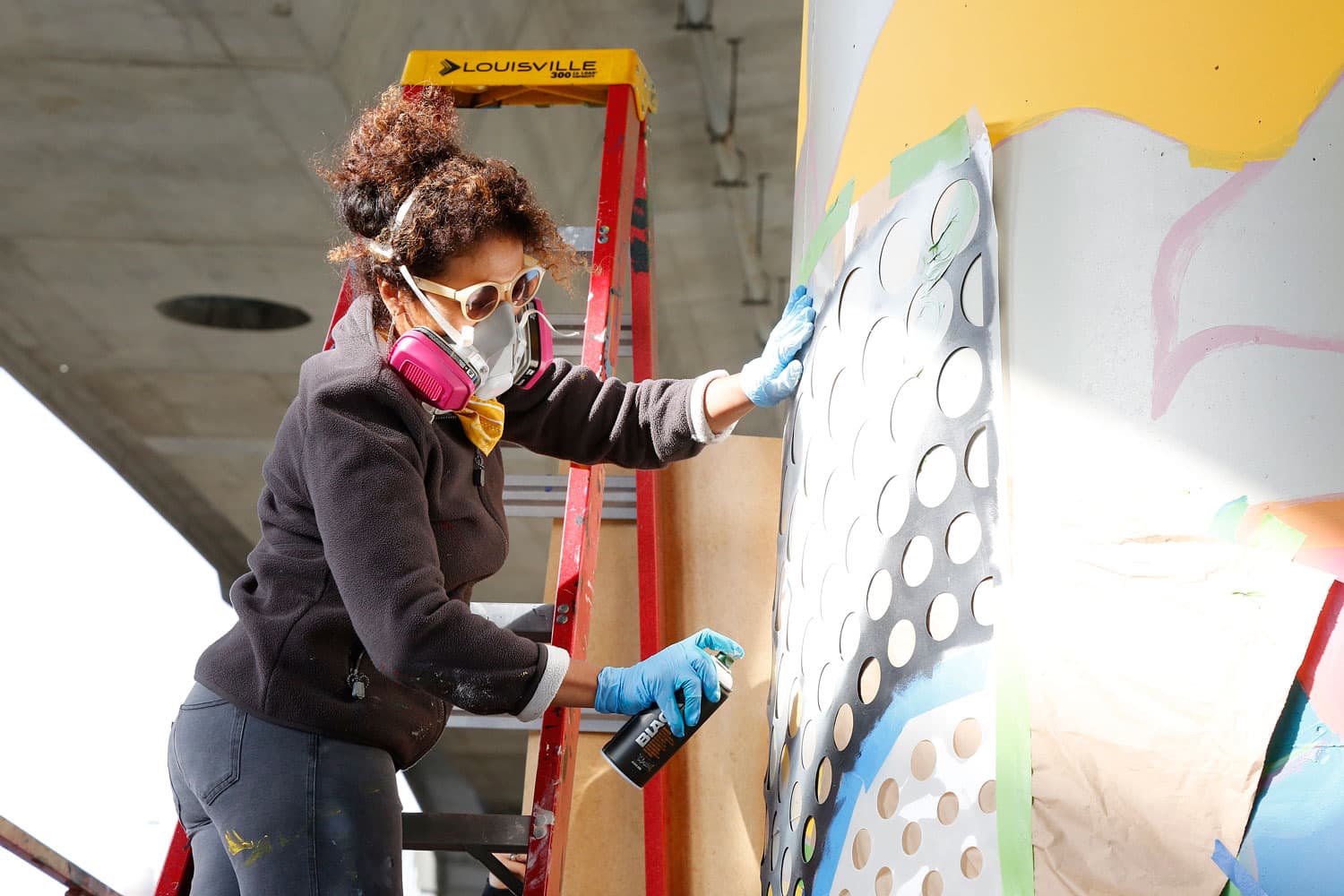Boston’s newest large public art project is keeping things local—and unique—while providing space for city muralists to share the stage with national artists.
The second Underground Mural Project will conclude with a block party this Saturday, as eight artists from Boston and beyond wrap up their murals under I-93. Situated between the city’s South End and South Boston neighborhoods, their work will join nine other murals that were painted in the 8-acre Underground Ink Park in 2017.
Both the 2017 and 2019 mural installations were overseen by Boston-based creative agency, Street Theory, which also has studios in New York and Los Angeles. Co-founder, Victor Quiñonez, wanted to use connections to artists known throughout the country to bolster the project, but also give a voice to local painters.
“We try to work with artists that are local, but also international and national to make sure it’s diverse in nature and of a diverse background,” Quiñonez said. “We want to give up-and-coming artists in Boston an opportunity to really shine, having them paint in an atmosphere with other artists who are already established and renowned.”
The exhibition space, Ink Block, is owned and supported by National Development, a real estate group with a focus on mix-use spaces. “One of the things that’s important to us is to have a national perspective and a local perspective as well, we want to bring in great artists from around the country but also have a Boston presence,” echoed Ted Tye, managing partner at National Development.
Quiñonez, aka Marka27, is also contributing a mural to the new installation. He’s joined by fellow local artists Dana Woulfe, Silvia López Chavez, GoFive and Matthew Zaremba, and other artists, like New York-based Greg LaMarche, have local roots.
Woulfe has been painting in the Boston area since 1997, including a series of murals in the city five years ago, and is now one of the four local artists painting in the Ink Park. He was proud to create another piece of public art for the city and said while it’s still hard for artists to make a living in Boston, events like the Underground Mural Project are giving them more exposure.
“It was a lot harder at the time [of his first series]. You had to navigate a lot of people to get permission from, to get funding from, the city regulations… this is really refreshing in terms of the quantity and quality of work down here and the ease of working,” Woulfe said of the installation, where he is painting an abstract “space-scape.”
“It’s really great for artists like me that Street Theory is highlighting local talent and bringing national artists in—that elevates everyone,” he affirmed.
Quiñonez co-founded Street Theory with his wife Liza, who oversees the “logistics and communication” for the studio, keeping clients and artists on track. She said the studio works with clients like National Development to find artists who will be a good fit for their plans, while still letting the muralists dictate what goes on the walls.
And they’re not afraid to pass on work they feel doesn’t fit.
“We have a process that allows artists to have as much vision possible while working with the client to make sure their themes are there too,” Liza Quiñonez said. “We have discussions and a round or two of revisions as necessary. Other times with certain clients it’s not a good fit, it’s more highly directed. Then we as artists decide whether it’s good for us or if we should contract out.”
“We don’t dictate what artists should paint,” Victor Quiñonez added. “At Street Theory we pride ourselves on working on projects that are authentic to our background and the cultures we come from.”
Most importantly, they actively engage with the neighborhoods they work in, ensuring respect for existing communities in a rapidly-changing city. Victor Quiñonez clarified that an artist who would work well within Allston’s younger population and music scene, might not be right for Roslindale.
“There’s a big buzzword with ‘placemaking’ in the last few years, I can’t say it’s a word we ever heard doing what we do,” Liza Quiñonez said. “With each of the projects, we do we pay attention to the community that exists and is there already. So we have an idea of ‘placekeeping’ instead of making the area a destination for others.”




